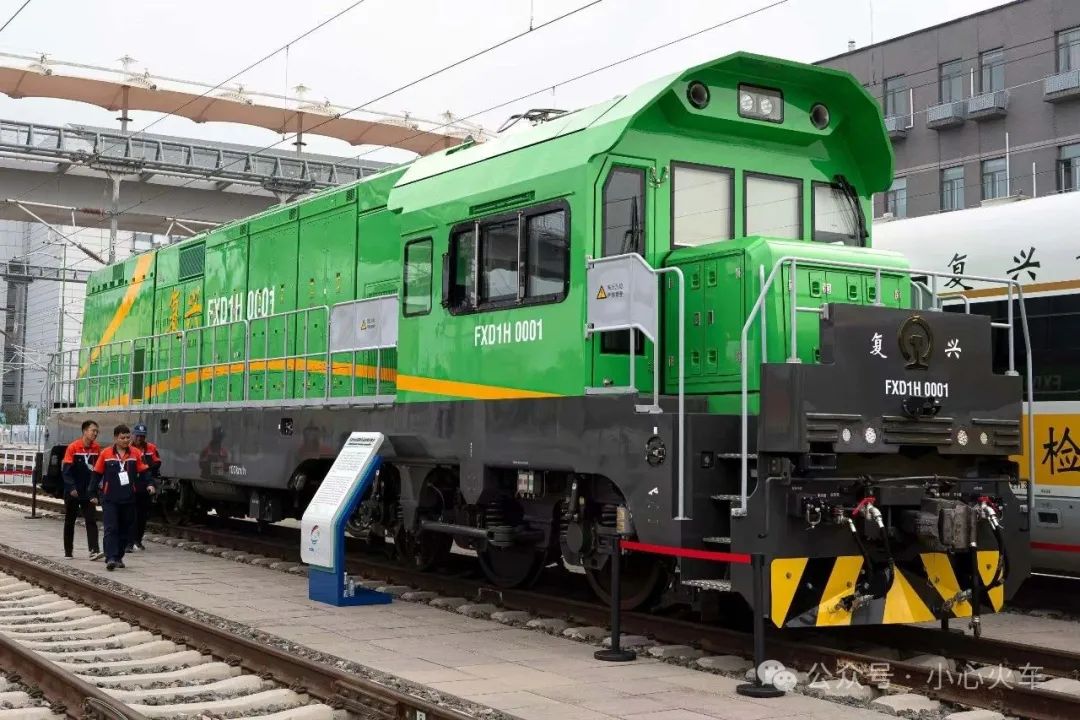
Reservation booth:+86(0)21-3114 8748
Visit/media contact:+8613601815988
QQ:2463282767
email:artsexpo@sgexpo.cn
ARTS Rail Transit ExhibitionNews China National Railway Group Co., Ltd. (hereinafter referred to as "China Railway Group") recently issued an announcement to open the first large-scale bidding locomotive this year, with a total of 180 units, involving about 3.3 billion yuan. According to the announcement, the bidding locomotive involves 45 diesel locomotives and 135 electric locomotives. Among them, the diesel locomotive is a 3,000-horsepower energy-saving and environmentally friendly shunting diesel locomotive, with a bidding amount of 878 million yuan.
While bidding for the purchase of energy-saving and environmentally friendly shunting diesel locomotives, China Railway Group also conducted competitive negotiations and procurement of freight diesel locomotives. According to the announcement, China Railway Group will purchase 155 4,400 horsepower AC transmission freight diesel locomotives through competitive negotiations.
CRRC people told the "China Business Daily" reporter that at present, there are only two domestic manufacturers that can supply locomotives, CRRC Dalian Locomotive and Rolling Stock Co., Ltd. and CRRC Qishuyan Locomotive Co., Ltd. In terms of price, this type of locomotive is slightly different according to customer customization. "The total price of 155 diesel locomotives is about 2.5 billion to 3 billion yuan." He said.
Accordingly, a total of 335 locomotives were purchased in this round of procurement bidding and competitive negotiations, involving a total amount of about 6 billion yuan.
The number of locomotives purchased this time is higher than the previous time. In May 2024, China Railway Group bid for 160 electric locomotives and 30 diesel locomotives at one time; Earlier, in June 2023, China Railway Group had tendered 483 locomotives at one time.
It is worth noting that in order to cooperate with the green transformation of track equipment, China Railway Group has limited all the bidding types of shunting diesel locomotives to energy-saving and environmentally friendly types, and ordinary shunting locomotives are no longer purchased. In 2024 and 2025, all shunting diesel locomotives will be purchased twice, with a total of 75 units.
A person from China Railway Group told reporters that in terms of railway equipment upgrade, China Railway Group is currently accelerating the elimination of high-energy-consuming old locomotives and expanding the application scale of harmonious energy-saving electric locomotives to achieve green transformation of transportation equipment.
According to data released by China Railway Group, as of the end of 2024, the number of railway locomotives in the country will be 22,500, of which 7,800 diesel locomotives, accounting for 34.67%. The above-mentioned person told reporters that the diesel locomotives owned by China Railway Group account for about 94% of the country's railway diesel locomotives.
Monitoring data shows that the current progress of railway diesel locomotives needs to be accelerated. According to the statistical bulletins released by the State Railway Administration and China Railway Group in recent years, since 2021, the number of diesel locomotives in the national railway has decreased by 200 year-on-year, and the number of diesel locomotives in the country has decreased from 8,000 to 7,800, and by the end of 2024, the number of diesel locomotives in the national railway has not changed significantly.

The above-mentioned China Railway Group told reporters that at present, China Railway Group is gradually accelerating the elimination of scrapped old diesel locomotives as planned. The person revealed that since 2020, China Railway Group has eliminated about 300 diesel locomotives in batches. "In the future, the proportion of energy-saving and environmentally friendly diesel locomotives will gradually increase." He said.
The green development and low-carbon transformation of the railway industry are important links to achieve carbon peak and carbon neutrality, and the upgrading of railway locomotives and rolling stock has effectively improved energy utilization efficiency and created good conditions for energy conservation and emission reduction.
According to the 2024 Statistical Bulletin of China Railway Group, in 2024, the chemical oxygen demand emissions of national railways will be 1,334 tons, a year-on-year decrease of 9.0%; sulfur dioxide emissions were 456 tons, a decrease of 30.0% over the previous year.
According to the reporter's understanding, the diesel locomotives currently in use in China mainly include AC transmission diesel locomotives, DC transmission diesel locomotives and hydraulic transmission diesel locomotives, of which AC transmission diesel locomotives are the main models, supplemented by the latter two models.
A person from China Railway Group told reporters that DC transmission diesel locomotives and hydraulic transmission diesel locomotives account for less than 10% of the total road. These two locomotives are mainly used in the north, especially in the northeast China Railway Shenyang and Harbin Bureau Group. "At present, these two types of locomotives are mainly eliminated." He said.
In terms of policy, as early as December 2023, the State Railway Administration issued the "Notice on the Public Solicitation of Comments" on the "Administrative Measures for the Elimination and Renewal of Old Railway Diesel Locomotives (Draft for Comments)", requiring that starting from 2027, old railway diesel locomotives that have reached the end of their service life should be completely withdrawn from the railway transportation market; Starting from 2035, old railway diesel locomotives should be completely withdrawn from the railway transportation market.
In June 2024, the Ministry of Transport and 12 departments jointly issued the "Action Plan for Large-scale Equipment Renewal of Transportation", once again putting forward requirements for the clean, low-carbon and efficient development of transportation energy power systems and promoting the green and low-carbon transformation of the industry.